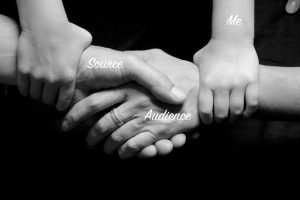That is, a field trip to the library on campus. It was pretty adventurous.
The librarian Gail, had a lesson prepared on integrating sources into our research paper. Specifically, how to introduce our sources to our audience.

Source: Pexels
The Quote Hamburger
Our professor had already introduced us to the “quote hamburger” method which is related to the topic Gail was discussing in the class that day.
The Top Bun- introduces the audience to the author
The Meat- the quote from the source
The Bottom Bun- interprets the quote in the context of the paper’s thesis
So, we had worked on introducing articles/authors before. However, the quote hamburger is a more general concept.
Getting Specific with Gail
Gail focused in on the first section of the quote hamburger. We were analyzing which information was pertinent, and important to tell the audience. Going over several examples we got a sense of what information should be included like an authors name ( if you are going to refer to the author later) and what information can be excluded (a description of a journal like Foundations of Psychology which the reader does not need explained to them).
Of course, how much you tell the audience depends on how you are using the source. If I am using Bob Smith’s article on rocket science to write a research paper on rockets, I should include his PhD in rocket science, but I don’t necessarily need to include his name.
And, if I am using a tweet on how amazing Ritz crackers are, to prove my point that celebrities love Ritz crackers then I must remember to tell my audience who the tweet is from. If I don’t tell them it is from a famous celebrity then the tweet seems irrelevant to my point.
Additionally, Gail mentioned open access journals. I had not really heard of this movement that makes articles open to anyone, without having to pay for a subscription to the journal. The researcher instead is the one who has to pay to get their work published. This is an interesting idea but in relation to quoting a source, if it is open access is important to note. It may seem arbitrary but knowing how a journal is funded influences what it will publish.

